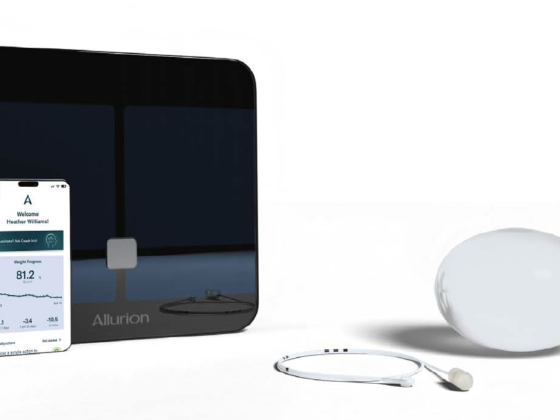Dr Claude Chauchard
Hippocrates said that we should avoid mixing foods that do not agree with one another in our digestive system. Indeed, some foods do not take the same time to digest as others, some are digested in a different part of the digestive tract, and others use different digestive secretions or enzymes in order to be absorbed. Very few people are capable of digesting “stones”: only those who are lucky enough to have extraordinary genes. With this in mind, we must differentiate between food intolerances and combining the wrong foods in a meal. Today, I want to provide you with a straightforward guide to help relieve any digestion issues and enhance the vital energy that your meals should give you. Everybody now knows that having a “full stomach” is not ideal for digestion. We also know that people with the blood group O tend to have more food intolerances. This concerns 80% of the population, who have to monitor their dairy, gluten and egg consumption.
 How should we combine our foods?
How should we combine our foods?
Let’s talk about the best way of combining foods in our meals. I’m sure we have all noticed that following a mono diet is the best way to allow our digestive system to relax. This is because if we only eat one kind of food, it is evenly absorbed in one part of the digestive tract, which is why we feel the vital energy immediately after eating a simple meal. An extreme diet, for example skipping dinner, generates a feeling of wellbeing from the very next morning. In fact, understanding the most frequent digestive signs that I encounter in my appointments tells me exactly which organ is suffering.
Symptoms appear in four places, which are:
- Stomach (burning, nausea, eructation (burping, i.e. gas), vomiting, pain, cramping and gastroesophageal reflux).
- Intestines (bloating, flatulence, wind, diarrhoea, constipation (the most frequent phenomenon for this part of the digestive system)).
- Finally, symptoms connected with nutrient absorption (loss of appetite, weight loss or gain, fatigue, protein, vitamin or mineral deficiency) and more general, yet disagreeable, symptoms (bad breath (the most common symptom), a bitter taste in the mouth, headaches, mood swings).
So, these are all alarm bells.
How can we combine our foods correctly?
Let us look at how I teach my patients to properly combine their foods for quick and spectacular results. Living better and for longer is my concept of medicine, and it always starts with regulating the diet. This is a touchy subject, as many people are very set in their ways. Consequently, I always try to be tactful and encourage them to make certain changes to see if they work. I try to explain things in a straightforward manner and correct the most obvious mistakes.
RULE 1: NEVER eat fruit after a meal, only 2 to 3 hours afterwards.
You should never eat too much fruit, as fruit is in the acidic category, along with lemons, vinegar, mustard, gherkins, capers, sweet olives, fizzy drinks and hard liquor. Refrain from drinking fizzy drinks wherever possible, despite what people think. Acidic foods go well with neutral foods, which are: cooked acidic foods (they become neutral when cooked, which is good to know), eggs, cheese, dairy products, avocado, tomatoes, oleaginous vegetables, butter, vegetable oil, red wine, spices, herbs, water, aromatic beverages.
RULE 2: Never eat cheese or dairy in the evening.
These neutral foods should be eaten either for breakfast or at lunchtime.
RULE 3: Never drink coffee or other aggressive drinks (in particular orange juice) on an empty stomach or before breakfast.
Coffee should be taken just after breakfast, should not be consumed in vast quantities and only before 2pm. The same goes for orange juice: I recommend cutting consumption by half or removing it entirely from your diet.
RULE 4: Chew food well. You should take 20 minutes to eat your breakfast, and at least 30 minutes for lunch or dinner.
Mastication prepares the alimentary bolus. It should be taken slowly, even if the food is easy to swallow, in particular rice, potatoes and pasta, which are part of the resistant starch group, along with cereals (quinoa, oats, spelt, buckwheat, bulgar, lentils, chickpeas, potatoes, marrow). In addition to foods containing resistant starch (which are more difficult to break down), some foods contain a more digestible starch: sweet potato, carrots, beetroot, celeriac, peas, pumpkin, black radish, rutabaga. I take a radical stance when it comes to starch: extremely radical if the patient wants to lose weight, and less so if it is just about properly combining foods. I allow them to combine starchy foods with acidic or neutral foods 2 or 3 times a week. And once a week, I let them combine them with animal protein (meat, poultry, cured meat, fi sh, shellfish, seafood).
RULE 5: I always recommend intermittent fasting on Mondays and after any excesses during the week.
RULE 6: Limit your water intake during mealtimes, but drink at least 1.5 litres of water over the course of the day (two thirds outside mealtimes).
RULE 7: A glass of alcohol should be followed by two large glasses of still water.
RULE 8: You should never stay constipated for longer than 48 hours.
Take immediate action: take PSYLLIUM® with your dinner or, as soon as you feel constipated, take magnesium chloride or CHLORUMAGENE® (1 teaspoon dissolved in half a glass of water at night is highly effective).
RULE 9: The best meals are those that combine neutral or acidic foods or vegetable proteins with one another, and either complex starches or simple starches with acidic or neutral foods.
RULE 10: To live better for longer, I cannot repeat enough that a well-functioning digestive tract is one that does its job in silence.
By respecting my TEN commandments, you will already start to feel younger and live better for longer. You have taken the fi rst step, so congratulations and keep going! My last piece of advice would be to round off your evening meal with some soup, like the Chinese do.
 Dr Claude Chauchard: A renowned specialist in nutrition, weight control and medicine for preventing aging. More than a million copies of 14 books sold in more than 5 languages. Founder of the anti-aging clinic concept La Clinique De Paris, established in China, Taiwan, Japan and Korea since 1992. Assistant professor at the universities of SEOUL and PEKING. Creator of the online Chrono Géno Nutrition method.
Dr Claude Chauchard: A renowned specialist in nutrition, weight control and medicine for preventing aging. More than a million copies of 14 books sold in more than 5 languages. Founder of the anti-aging clinic concept La Clinique De Paris, established in China, Taiwan, Japan and Korea since 1992. Assistant professor at the universities of SEOUL and PEKING. Creator of the online Chrono Géno Nutrition method.
More informations: lcdpi.net












